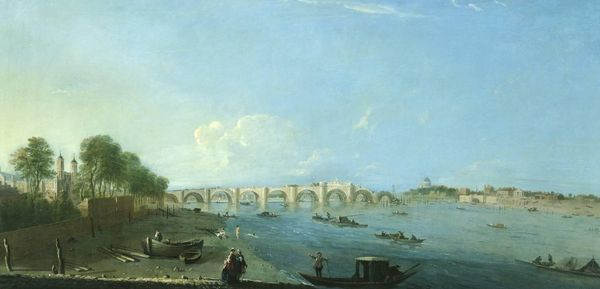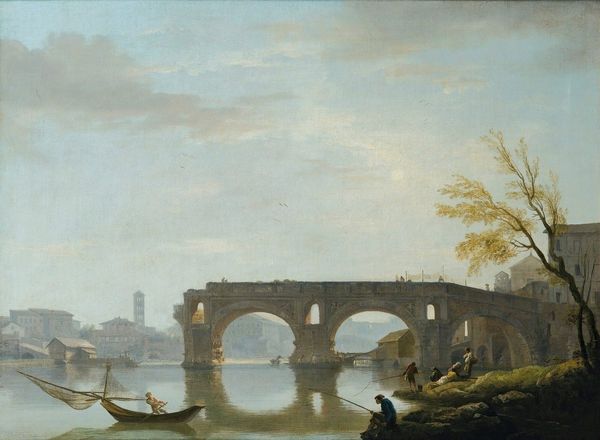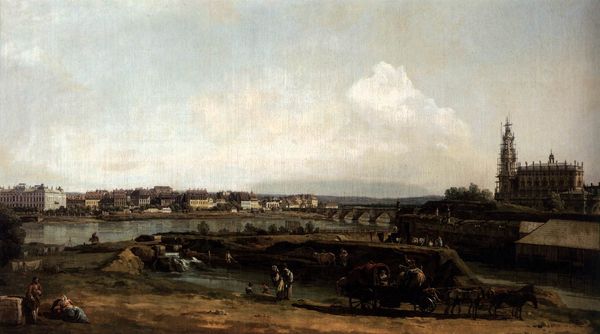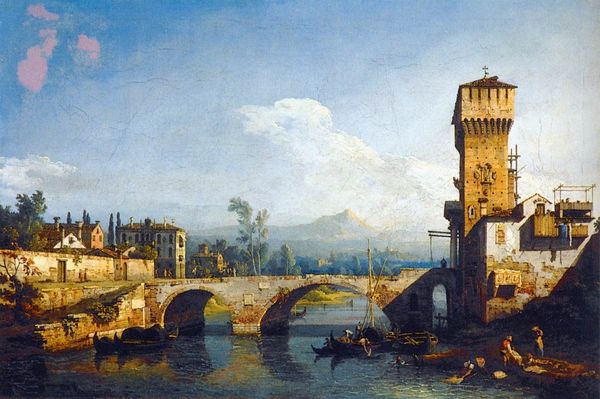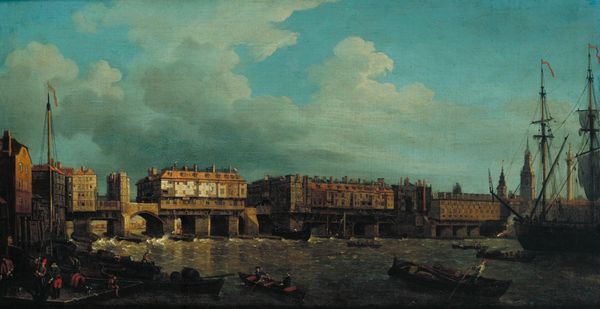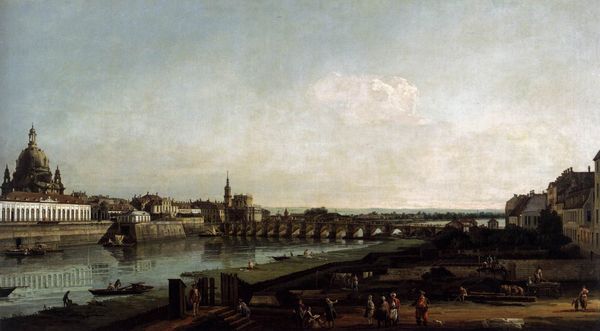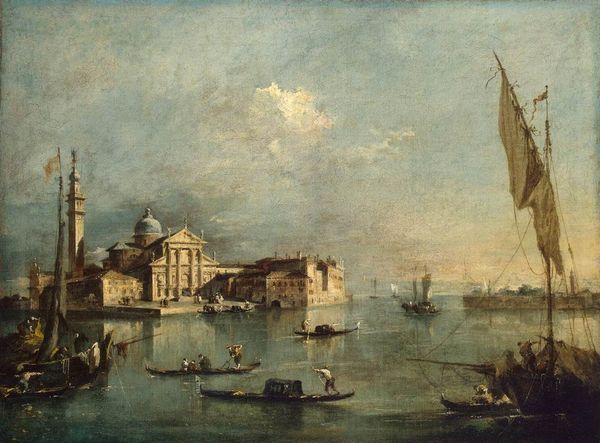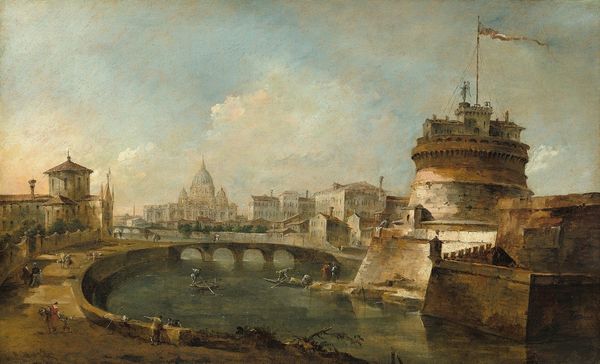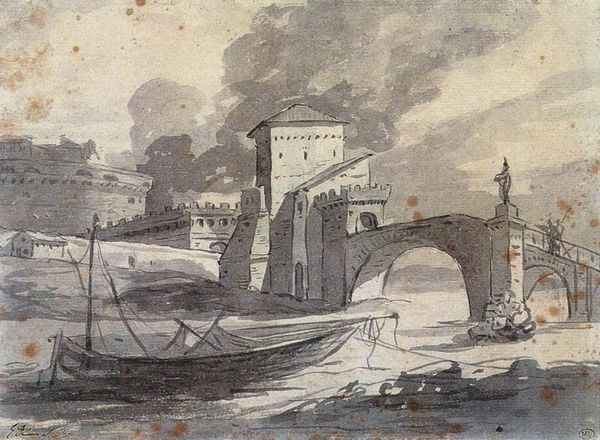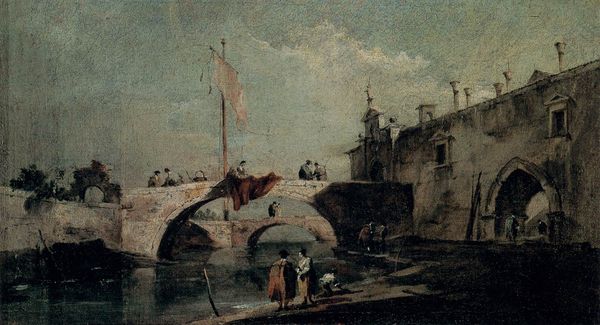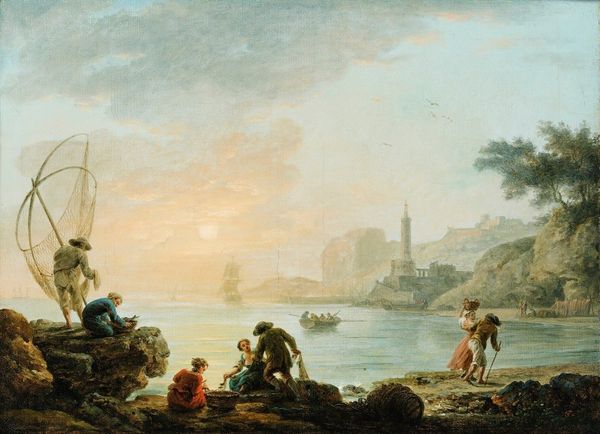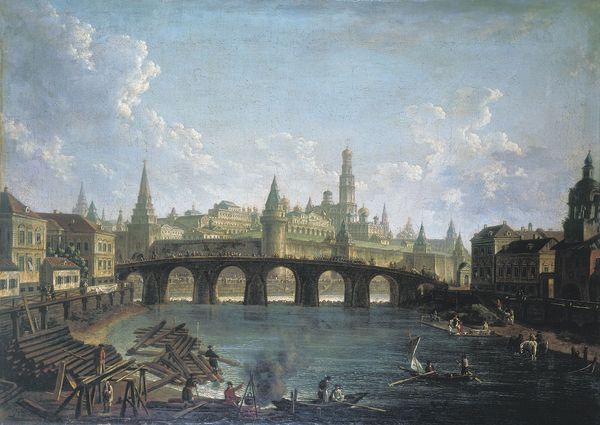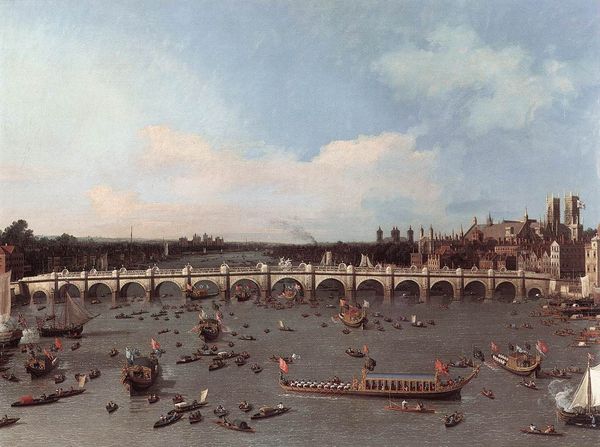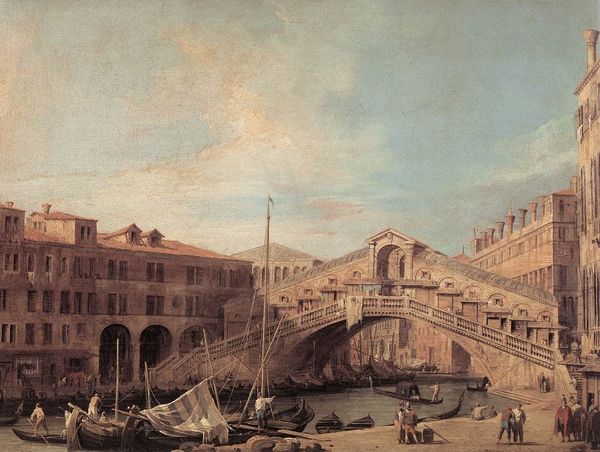
painting, oil-paint
#
boat
#
baroque
#
painting
#
oil-paint
#
landscape
#
oil painting
#
water
#
cityscape
#
genre-painting
Copyright: Public domain
Editor: Here we have Claude-Joseph Vernet’s “The Bridge and the Castel Sant'angelo in Rome,” painted in 1745, using oil paints. I’m immediately struck by its tranquility; the figures seem so small against the monumental architecture and landscape. How do you interpret this work, especially considering its historical context? Curator: The tranquility you observe is a strategic framing. Vernet presents Rome not as a center of power, but as a picturesque vista, already ripe for the gaze of the Grand Tourist. Think about who’s consuming these images: predominantly wealthy, white Europeans cementing their cultural capital through viewing—and owning—such scenes. The very act of depicting the everyday lives of the working class alongside these monuments subtly reinforces a social hierarchy, doesn't it? Editor: So, it's not just a pretty picture, but a statement about class and power dynamics? Curator: Precisely. Consider also the Castel Sant’Angelo itself. It began as Hadrian's tomb, then a papal fortress, and by Vernet's time, a prison. Highlighting it within a genteel landscape occludes that history, sanitizing its true function and the stories of those it incarcerated. What do we lose when we only focus on the aesthetic qualities, while ignoring this loaded symbolism? Editor: I guess we lose the ability to really understand the full story… It makes me reconsider my initial impression. Curator: Exactly! Art like this isn't just about visual appeal. It’s a cultural artifact embedded within specific social, political, and historical frameworks. By looking critically at these contexts, we start to unpack the ideologies that these images helped perpetuate. Editor: I hadn't thought about it that way. I’m going to remember this next time I visit a museum. Curator: And hopefully, it encourages a more nuanced understanding of art's role in shaping our perception of history and society.
Comments
No comments
Be the first to comment and join the conversation on the ultimate creative platform.
